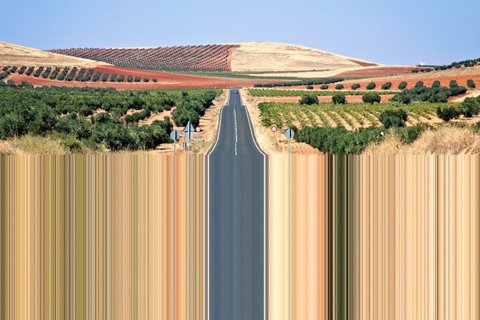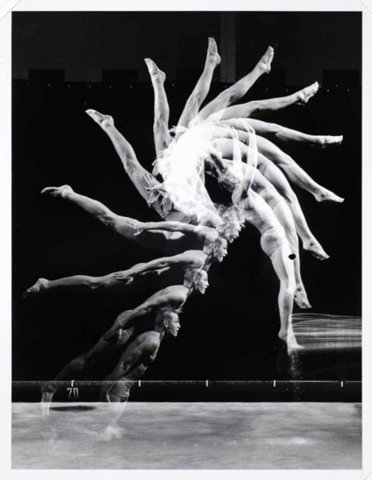A nice example gradation as you can see a slow transition from small oblong circles to larger ones or vice versa depending on the viewpoint. It's showing spatial progression as you can see that size changes in a backward sort of progression.
This cake has a parallel movement in which the unit forms transforms gradually in a straight line downward. The many different degrees of gradation and the solid lines separates these areas into different segments of the same steps.
This definitely defines gradation as the bottom shows an optical illusion, creating a feeling of progression leading to a series of climaxes. This is spatial gradation by it's progression by also changing from different shapes (foreground of blurred lines, to clear picture presumed to be in background). The shape in the foreground (blurred lines) aslo tend to show tension as they look pulled outward. The speed of gradation was extremely fast due to it simultaneously drifting to blurred lines or vice versa.
Concentric movement is the main pattern for this gradation. The climax is in the middle and notice how the spatial progression pulls this back. This shows each layer moving in a slow gradation to the next, guiding the eye the main point in the enter.
+1.tiff)
If slowed down to show a smooth progression or transition, this gradation would quickly shift from the south western to the north eastern corner of the plane signifying planar progression. The pattern also seems to direct toward moving in a zigzag sort of motion (as the tie curls or bends around to the next side).
This picture of multiple images share a shape gradation as each image added gradually transforms this into a unified composition. This looks like it was really fast due to the multiple images changing not to drastically, but enough to where it substantially looks as if it happened in only an instant.
Just by changing the position or shape of each bone makes a rift in this composition. It makes it seems like it's going in many different directions at once or that it somehow zigzags.
Not much of gradation but the slight tip over to the right, and it's only a matter before gravity have it's course creating another movement. The structure of course seems to be be curving or bending towards the right.
The slow transition between the oldest (biggest) the newest phone (smallest) gradually shows the spatial progression of this gradation. The decreasing size shows a shift ( or movement) of the phones moving backward and to the right.
Let's finish this chapter of Gradation with a picture that has an all over type movement or in other words shape gradation. The lines tend to compress inward also making the picture seem elastic.





.tiff)
.tiff)



















